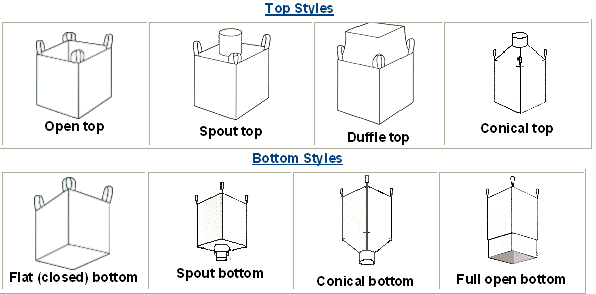Semi-Bulk Containers

Custom Equipment Company is ready to supply all your bulk bag requirements. Our bags are manufactured from coated or uncoated polypropylene material and are available with a variety of spouts, tops, bottoms, straps, liners and other special features.
Flexible Intermediate Bulk Containers (FIBC) and Intermediate Bulk Containers (IBC) are strong and durable, cost effective, environmentally friendly and recyclable, and they optimize cube space. We can custom make each bag to meet your requirements.
On the dry product side, the customer needed a lightweight, collapsible container that could be reused for closed loop deliveries many times over. The container needed the stability and safety of a box, moisture resistant, and free of exposed wood or fiber. The filling and discharge options of a FIBC (bulk bag) i.e. fill spouts, discharge chutes and top handling options. Last but not least our customers needed a container that required no assembly and could be set-up and handled by one person. On the semi-bulk liquid side of the industrial market place, the customer needed a lightweight, collapsible container that could be reused. They needed the container to be stackable and hold up to 300 gallons. Custom Equipment Company has proudly met these customer demands for both liquid and dry products.
Advantages:
Lightweight
Fully assembled
When empty the containers fold down flat making repositioning and storage extremely economical and effective.
Due to the durability of the Custom Equipment Company Container, many trips can be achieved, lowering the per trip cost dramatically. Given the rising costs and demands of packaging, the rapid depletion of our natural resources and the corporate urgency to save money, reusable packaging system is the viable solution. Increase profits and eliminate unnecessary waste with Custom Equipment Company reusable Container!
Some Examples of our products
 |
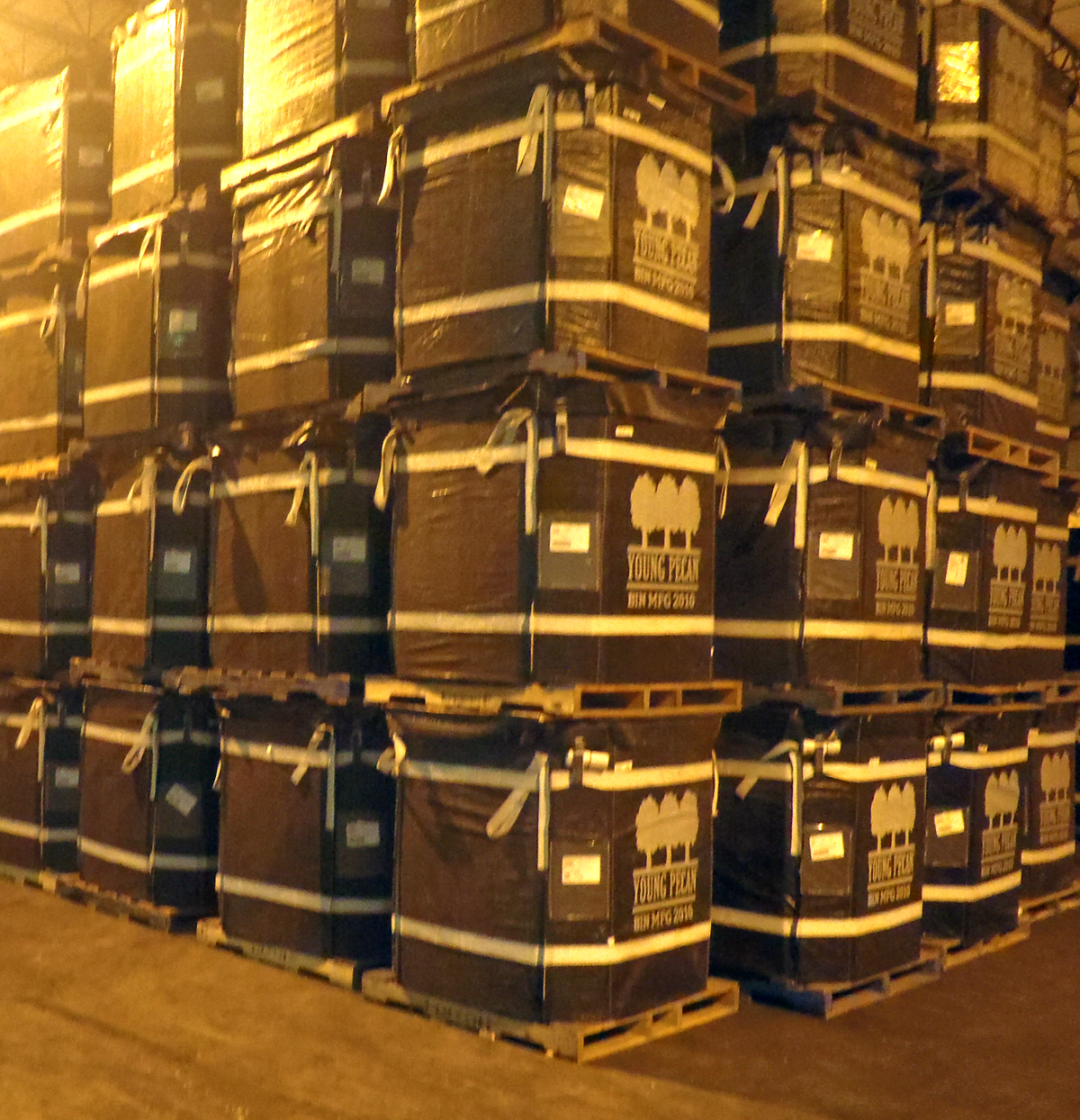 |
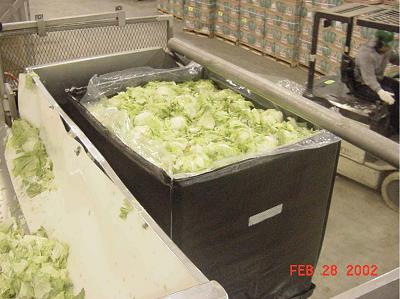 |
 |
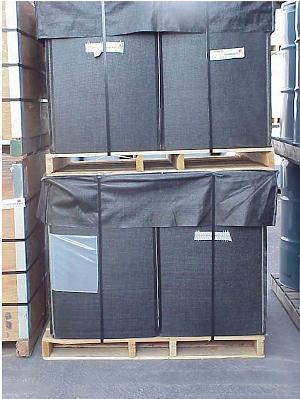 |
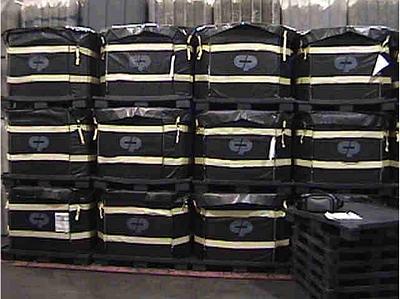 |
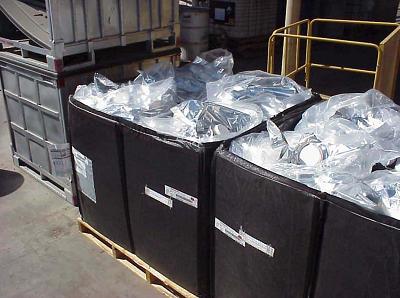 |
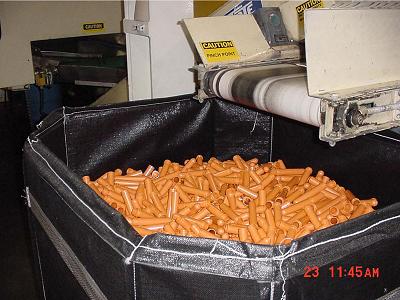 |
Uses:
Liquid - Pastes - Purees - Compounds - Polymers Performs - Seeds - Feeds - Chemicals - Recycling POP'S - Food Products - Manufactured Parts Printed Materials - Ingredients - Etc. Benefits:
Ready to Fill in Seconds - No Tools to Assemble
Saves Labor - Single Person Setup
Lightweight - Durable - Reusable - Stackable
Collapsible - Save Valuable Space - Packs Flat
Recyclable - Not Affected by Moisture
Protects Products - Eliminates Wood & Fiber
Saves Money
Construction & Design Features
U-Panel, 4 panel or circular design
Single or multiple use
Fabric- From 3 oz. to 9 oz. polypropylene
Coating - Uncoated or coated
Food Grade Material
Breathable
Anti-static: For use in explosive atmospheres
Groundable (conductive): For protection against electrostatic hazards
UN Certified: For transportation of hazardous waste
Baffle: Nearly rectangular shape provides savings in storage & transportation area
Request a Quote: [email protected]
CUSTOM EQUIPMENT COMPANY CONTAINER PACKAGING LINE:
Collapsible: requires less warehouse space when empty. Because it is collapsible it can be repositioned at 1/5 to 1/10 of the cost of traditional liquid packaging.
Labor: Because our unit is collapsible, we can fit more gallons of empty packaging per truck/container load than any other form of liquid packaging, i.e., one 40' container of LC's is the equivalent of 5 container loads of un-palletized empty drums or 8 container loads of bottle in cage IBC's. Customers will have less truck traffic and labor because of their collapsible nature.
Liners: because we use liners, no internal cleaning required. A typical 275 gallon rigid IBC costs $50.00 to $150.00 to get cleaned, unless the company cleans the IBC's themselves.
Light weight: Because the PPE OR PP is typically 100 lb to 200 lb. lighter in weight than traditional IBC's, customers can load an extra 275 to 300 gallons per truck/container load because of packaging weight savings. This translates in to an average freight savings of $0.01 to $0.05 per gallon. This is a huge savings. It doesn't stop there, because a customer can load more product per truck or container load the total number of truck loads is reduced providing additional savings.
Reuse: The PPE or PP are reusable, all that is require for use is a new liner. From our experience, there is nothing that can compete with our products cost wise, when they are reused.
General Specifications
Styles of Bulk Bags:
U-Panel Bulk Bag: On a U-panel bag, flat woven fabric (like sheets) is used. If you imagine one piece of fabric folded like a "U", that one piece becomes a continuous side, bottom and another side. Then sides three and four are sewn to the U-panel. The U-panel, a continuous piece of fabric with no seams, supports most of the weight. This is the strongest bag design and the largest selling one. It is also one of the least expensive to purchase.
Circular Woven Bulk Bag: Fabric is produced on a circular woven loom the way that socks are made. Looms can produce up to 140" diameter fabric. The fabric is cut and a bottom and top are sewn onto the circular woven portion. The bag actually appears square because of the way they sew on the lifting loops and how they fold the bag when they compress them for shipping.
4-Sided Bag: 4 panels or sides are sewn together, and then a bottom and a top are sewn on.
Bag Sizes:
For a U-panel bag, we need to know the length, width and height of bag. For a circular woven bag, we will need to know the diameter and the height or the length, width and height. We have quoted over 150 different bag sizes, so there really is no standard size. We will custom make each bag to meet your requirement.
Fabric Weight:
Woven polypropylene fabric for bulk bags ranges in weight from 5 ounce to 8 ounce per square yard. The number of times you expect to use the bag is also important. The more your use the bag the heavier the fabric will need to be.
Coated or Uncoated Fabric:
Coated fabric adds an extra ½ ounce per square yard. The coating is made of melted polypropylene that is rolled over the fabric after it is woven. Agricultural products typically would require uncoated fabric so that the bag can breathe and prevent rotting. Products that are ½" or bigger in size and do not break down into fines, would use an uncoated bag.
Top of Bag:
There are several designs for the top of the bag (where the bag is being filled). Spout Top, Duffel or Skirt Top and Flap Top.
Bottom of Bag:
There are many design combinations to the bottom or the discharge part of the bag. Solid Bottom, Discharge Spout, Port Hole and Cane Bottom.
Lifting Loops:
There are three types of lifting loops.
Corner Lifting Loops: There are four 10" loops in total. The loops are made from polypropylene webbing. They look similar to polyethylene webbing (seat belts). The webbing loop runs down the corner of the bag. Depending on how much weight is being loaded will determine the length of the webbing loop.
Sleeves: U-Panel Bulk Bag Only: This is a very good lifting system because the weight is disbursed the entire side of the bag and there is less chance for tearing and failure.
Stevedore Straps: Two giant lifting straps that are sewn from one corner to another.
Safety Factor:
This will appear as 5:1, 6:1 or 8:1. This means you can load 5,000 pound on top of a 1,000 pound bag with no tearing of the Fabric and all seams will hold. A 5:1 safety factor is the most common bag used. 6:1 is called a UN bag for United Nations. They are approved for the transportation of hazardous materials and they are not allowed to be repaired if they tear. 8:1 bag is a UN bag that is repairable.
